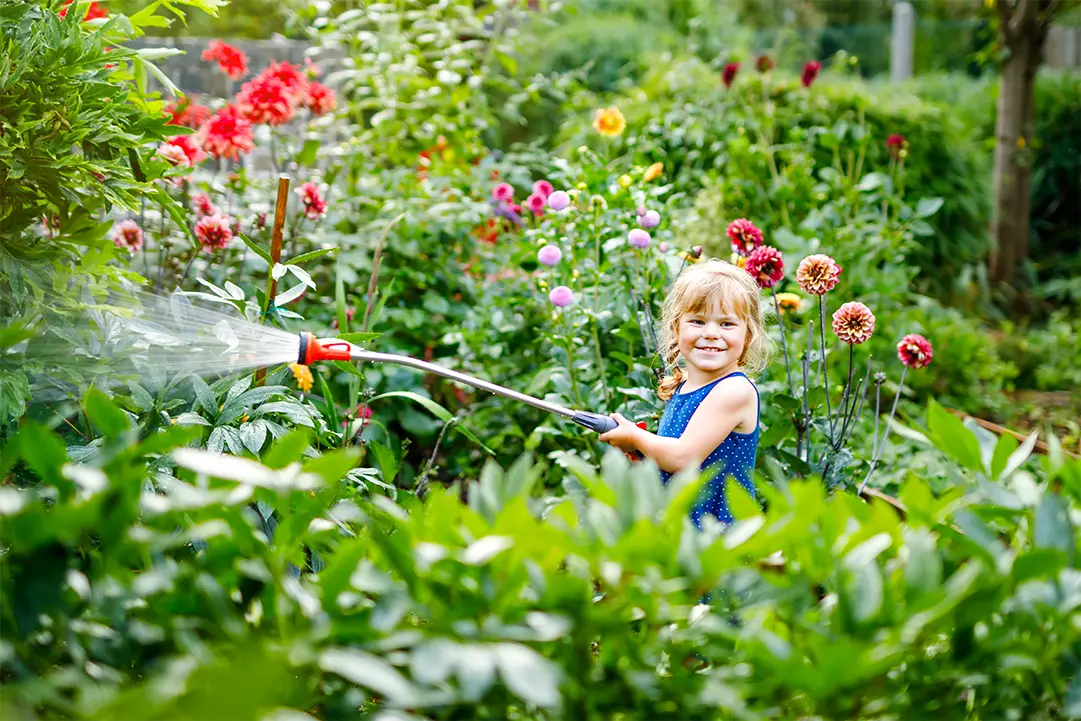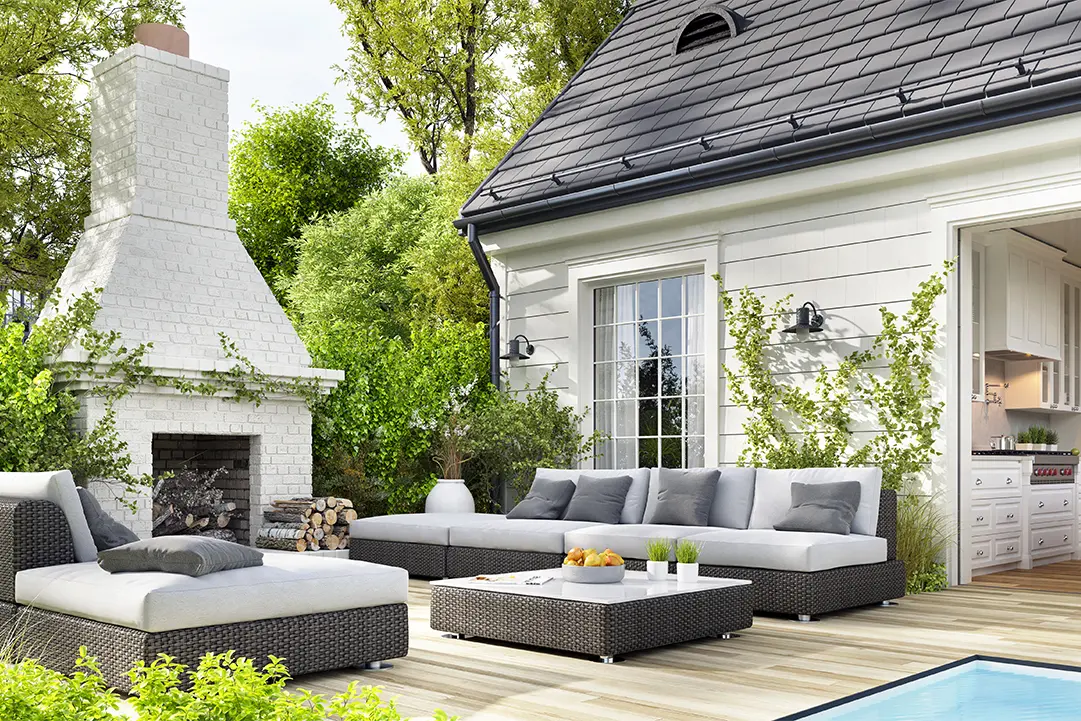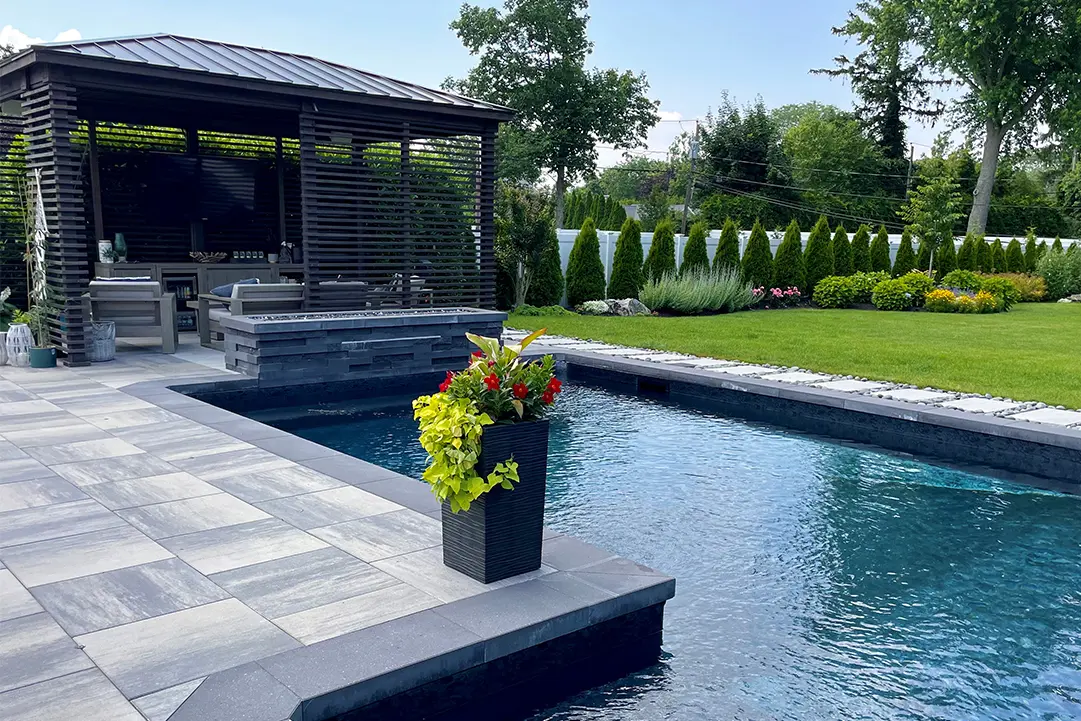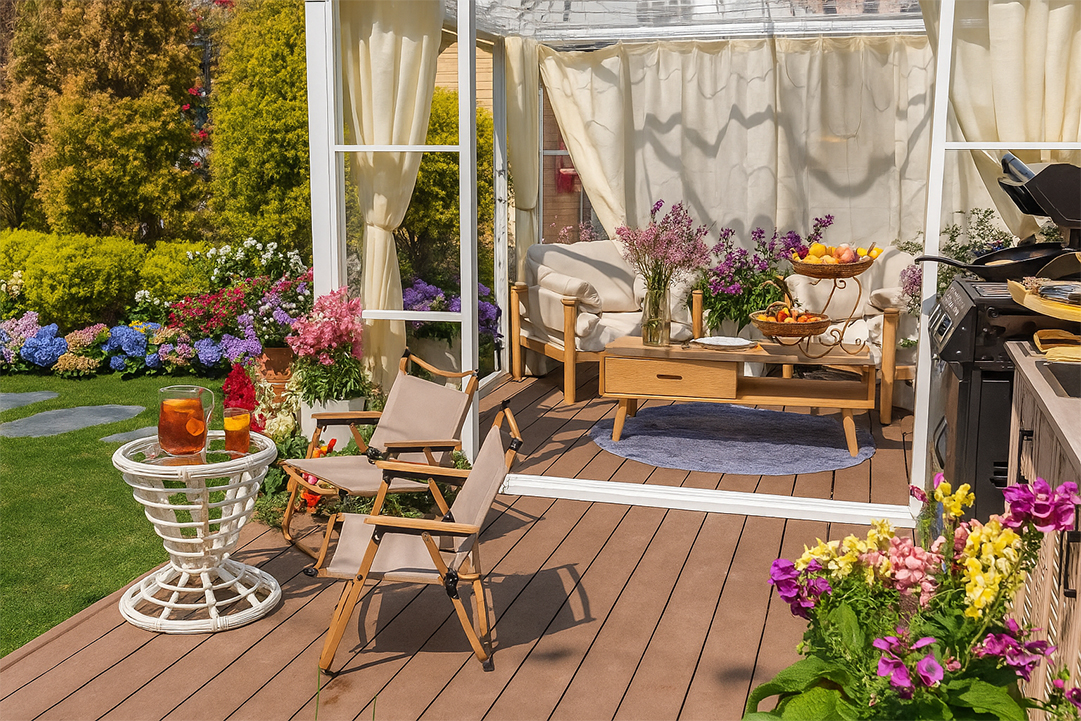New Jersey summers can be long, humid, and hot. While many plants can handle standard warm weather just fine, sustained high temperatures can still take a toll, especially when paired with strong sun or inconsistent rainfall. Whether you’re tending a backyard perennial bed or maintaining a more structured landscape, protecting your plants from heat stress comes down to a mix of smart design, dedicated care, and thoughtful planting choices from the start. Here’s what to know:
Mulching
One of the most practical tools for guarding against heat stress is mulch, and not just because it gives beds a neat, uniform look. Mulch acts as a protective barrier over the soil, helping to regulate temperature and hold in moisture. During hot spells, it can significantly reduce surface evaporation, which means less frequent watering and less chance of your plants wilting or drying out.
There’s also a protective element against soil compaction and erosion. Without mulch, the soil can become crusted over by sun and wind, making it harder for water to penetrate and roots to breathe. Organic mulches like shredded bark, pine straw, or leaf mold break down over time, slowly improving soil structure and fertility.
For best results, apply mulch at a depth of 2 to 3 inches—enough to insulate but not smother. Be sure to leave space around the base of each plant to avoid trapping excess moisture at the stem or crown, which can lead to rot.
Shading
All plants need light, but even sun-loving varieties can get scorched when exposed to peak summer rays for too long. If parts of your garden are in full sun all day—particularly hardscaped areas that reflect heat—consider integrating some form of shade into your landscape.
Temporary solutions include lightweight shade cloth, patio umbrellas, or even repurposed items like lattice panels. But from a long-term perspective, incorporating shade into the design—whether through trees, trellises, or pergolas—is typically more effective and attractive. You can even use plantings themselves to create natural shade. For example, tall ornamental grasses or layered shrub groupings can shelter smaller plants underneath.
The goal isn’t to remove sun exposure completely, but to soften it during the most intense hours of the day. Filtered shade, particularly in the afternoon, can make a noticeable difference in how your plants hold up through a heatwave.
Watering
Watering deeply and infrequently is often better than frequent, shallow watering, especially when it’s hot out. Shallow watering encourages surface-level roots, which dry out more quickly. In contrast, deep watering encourages roots to grow downward, helping plants become more drought-tolerant in the long run.
Early morning is the best time to water, hands down. Not only does it give plants time to absorb moisture before the heat sets in, but it also reduces the risk of fungal diseases that can occur when leaves stay damp overnight. Avoid overhead watering during the midday heat; most of that water will evaporate before it reaches the roots.
If your landscape includes an irrigation system, it should be adjusted for summer. Smart controllers and drip zones can target water where it’s needed without overdoing it, which is particularly important when local water restrictions come into play. In a well-designed landscape, irrigation is built around plant types, exposure, and soil conditions—not just convenience.
Plant Selection
One of the best ways to avoid heat stress is to eliminate it from the equation altogether. Selecting species and cultivars known to thrive in New Jersey’s summer conditions can save a lot of trouble down the line. This doesn’t mean sacrificing variety or color. Many native and well-adapted ornamental plants are showstoppers in their own right.
Look for plants with thick, waxy, or fuzzy leaves, which naturally help retain moisture. Coneflowers, black-eyed Susans, ornamental grasses, sedums, and many salvias are all well-suited for heat. On the shrub side, consider boxwood, hydrangea paniculata, and dwarf varieties of viburnum. Explore the options and decide which ones you like best!
Design plays a role too. A professional landscape architect like High Tech Landscapes will factor in not just plant type, but orientation, wind exposure, soil conditions, and the microclimates created by hardscape features or surrounding structures. Heat resilience starts at the planning stage, not just in response to damage later.
Spacing
In the effort to create lush, full planting beds, it’s easy to go overboard and pack too many plants into too small a space. While this may look great early in the season, it creates competition for moisture and airflow when summer hits. Dense plantings trap heat and humidity, making it harder for roots to access what they need and increasing the risk of fungal issues.
Thinning out overcrowded beds or spacing plants more strategically can dramatically reduce heat stress and help every plant perform better. It’s also a good opportunity to check for signs of stress early—such as wilting, leaf scorch, or early flowering—so you can intervene before permanent damage occurs.
In design-build landscaping, proper spacing is part of the initial plan. We take future growth into account to ensure that your garden looks great in year one and thrives for years to follow.
Landscape Design
While there are plenty of small changes homeowners can make on their own, a thoughtful landscape design is often the best long-term solution for managing heat stress. From material selection to planting strategy and shade integration, every element can be optimized to protect plants and improve performance, even in the middle of a heatwave.
At High Tech, we design outdoor spaces that are beautiful and able to withstand the full range of New Jersey’s seasons. If you’re planning a renovation or want to make your yard more functional and resilient, we can help create a landscape that thrives in the heat and beyond. Contact us today!




